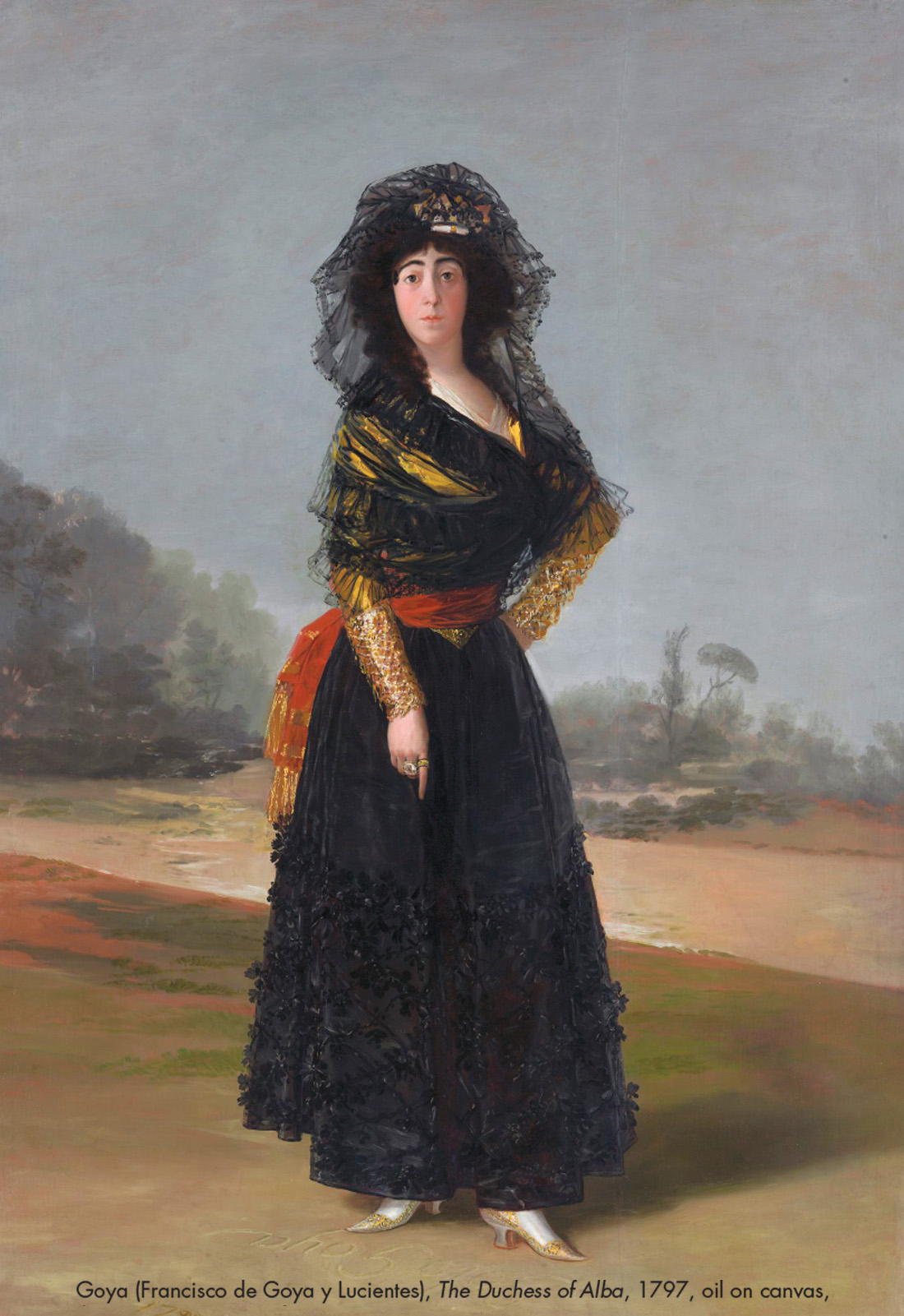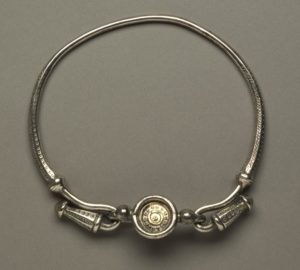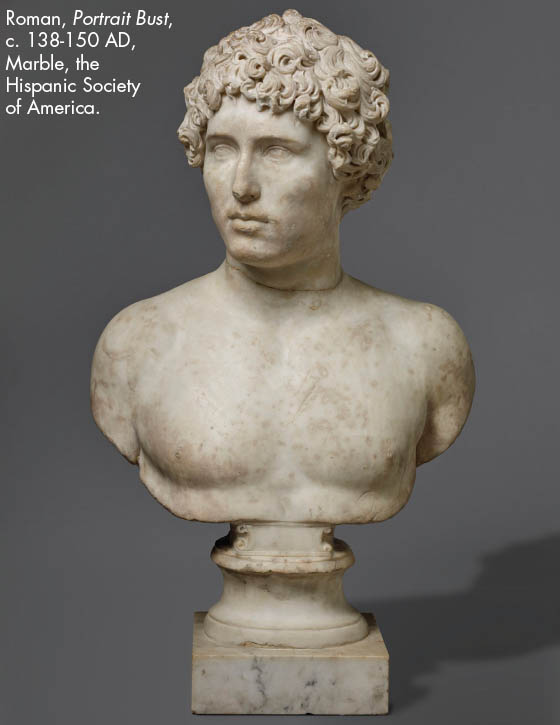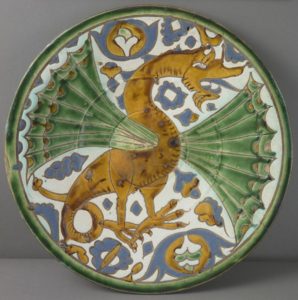Glory of Spain: Treasures From the Hispanic Society

MFAH Lets Rip With Treasures from the Hispanic Society Museum & Library
De-emphasizing wife Josefa, and mistress Leocadia, 44 years younger, misguided romantics spin Goya as lusting after the Duchess of Alba. They believe the painting “Naked Maja” which hangs in the Prado and got Goya investigated by the Inquisition, is a portrait of Alba. What better proof that the old deaf painter’s sexual desires were fulfilled, they argue, than this reclining nude with hands behind head, direct gaze, and faultless thighs and pubic triangle.
The nude is not Alba. Scholarship determined that Alba and Goya were close trusting friends, she popped into his studio, he hung out at her Madrid palace and her country estate. Flirty, liberated, the Duchess was Goya’s favorite subject, he captured her in formal portraits, informal paintings – teasing servants, holding children – and in multiple drawings.
Yet Goya revealed feelings. He painted Alba standing in a black dress, the Duke had recently kicked the bucket, with her finger pointed to an inscription on the ground that reads “Solo Goya.”

Only Goya! In 1906 Archer M. Huntington paid a hefty price to lasso Goya’s declaration of love for the Hispanic Society, and it’s worth the trip to Manhattan just to see the artist’s treatment of embroidery in Alba’s red waist sash. No need to travel. Alba’s portrait is currently in Houston, a centerpiece of MFAH’s exhibition Glory of Spain: Treasures from the Hispanic Society Museum & Library, through May 25, 2020.
Archer Huntingdon became seduced by Hispanic culture in Mexico in 1898 and began to study Spanish literature and to concoct the idea of creating a museum devoted to the art and artifacts of the Spanish Empire. He collected books and manuscripts, then traveled to Spain to collect archaeological artifacts. To know the “soul” of Spain, Huntingdon learned Arabic and interacted with ordinary Spaniards. The windfall that came with his father’s death allowed him to add rare volumes and purchase art by Spanish masters. In 1904 Huntingdon founded the Hispanic Society of America and built his museum, which opened to the public in 1908. Today the collection has 750,000 objects from Spain, Portugal, Latin America, and the Philippines. Over 200 of these – paintings, drawings, sculpture, illuminated manuscripts, maps, textiles, porcelains and ceramics, metalwork and jewelry, spanning 4,000 years of Hispanic culture, are exhibited at MFAH.
 If as Polybius believed, we’re lazy to be ignorant about Rome’s territorial expansion, take satisfaction in knowing the Romans began to gobble up Spain in 218BC, and after vanquishing the Carthaginians, controlled the entire Iberian Peninsula. The Romans built 12,000 miles of Spanish roads and bridges for their chariots. You get a sense of Spain’s importance to Rome at Merida’s archaeological ruins, where the temples, theater, baths and racecourses rival Rome’s Imperial architecture. Among the exhibition’s Roman artifacts are a 1st-century marble Portrait Bust from Italica, a 1st-century bronze Oil Lamp with the head of the god Pan, and a 1st-century floor Mosaic with the head of Medusa.
If as Polybius believed, we’re lazy to be ignorant about Rome’s territorial expansion, take satisfaction in knowing the Romans began to gobble up Spain in 218BC, and after vanquishing the Carthaginians, controlled the entire Iberian Peninsula. The Romans built 12,000 miles of Spanish roads and bridges for their chariots. You get a sense of Spain’s importance to Rome at Merida’s archaeological ruins, where the temples, theater, baths and racecourses rival Rome’s Imperial architecture. Among the exhibition’s Roman artifacts are a 1st-century marble Portrait Bust from Italica, a 1st-century bronze Oil Lamp with the head of the god Pan, and a 1st-century floor Mosaic with the head of Medusa.
By 1300BC, Celts from the north had inhabited Spain and mixed with indigenous Iberians. The people who resulted were Celtiberians, who annoyed the Romans because they resisted subjugation and cleaned their teeth with urine. Like the other pre-Roman occupants of Spain, the Phoenicians, Greeks, and Carthaginians, Celtiberians parlayed Iberian silver mines. Excelling at metalwork, they produced the Celtiberian Gold and Silver Torque (neck ring). Centuries later, the Church commissioned very elaborate silver objects such as the Reliquary Cross from Barcelona (c.1400). Quite sumptuous objects were crafted out of gold plundered from the Americas.

Market excursions reveal pottery is a cash cow. Pottery became significantly refined after Muslims entered Spain in 711 and Muslim potters introduced the technique of separating color glazes to decorate surfaces, as seen in the ceramic Plate with Dragon from Seville (c.1500.) Some exhibition ceramics date back to 2400BC.
The Visigoths ruled Spain after the Romans, they contributed blue eyes, and gave the Catholic Church its foothold. See the exhibition’s Visigothic Belt Buckle (550AD) studded with garnets.
Also exhibited: more Goyas, El Greco, Velazquez, medieval illuminated Manuscripts, Silk Textile from the Alhambra (1400), a 15th-century Spanish iron Door Knocker with Dragon Head design, an earthenware Jar from Mexico 1660, an 18th-century silver Vessel from Peru.















